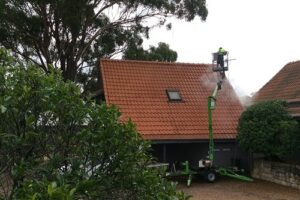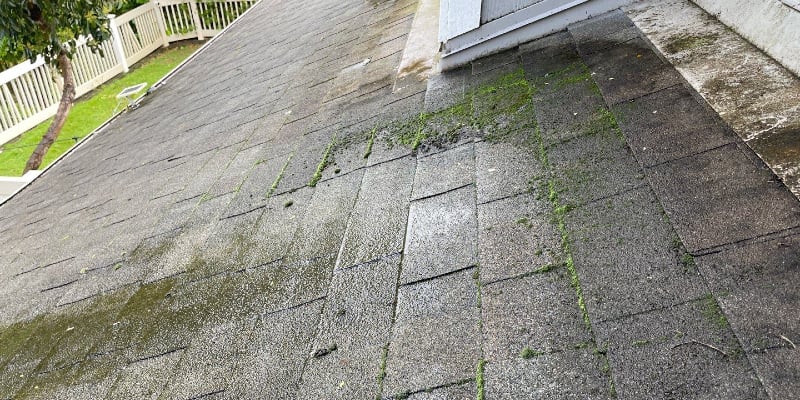A well-maintained roof not only enhances the aesthetic appeal of a home but also plays a crucial role in protecting it from the elements. However, one of the most common yet overlooked threats to a roof’s integrity is moss growth. While moss may give a home a rustic charm, its presence can lead to serious structural issues if left unchecked. Recognizing the signs that indicate a need for roof moss removal can save homeowners from costly repairs and extend the lifespan of their roofing system.
Discoloration and Dark Stains
 One of the first visual cues that indicate moss is taking over a roof is discoloration. Moss often appears as green patches, but as it progresses, it can cause dark streaks and stains. These stains are not just an eyesore; they can trap moisture and lead to the deterioration of shingles. A roof that appears streaked or uneven in color may already be compromised by moss growth, making it essential to address the issue before it worsens.
One of the first visual cues that indicate moss is taking over a roof is discoloration. Moss often appears as green patches, but as it progresses, it can cause dark streaks and stains. These stains are not just an eyesore; they can trap moisture and lead to the deterioration of shingles. A roof that appears streaked or uneven in color may already be compromised by moss growth, making it essential to address the issue before it worsens.
Water Retention and Moisture Buildup
Moss thrives in damp and shaded environments, and once it establishes itself on a roof, it retains moisture. Unlike algae or mildew, moss has a sponge-like quality that allows it to absorb and hold onto water for long periods. This prolonged exposure to moisture can weaken roofing materials, leading to leaks, mold growth inside the home, and even structural damage. Homeowners who notice consistent moisture on their roof even after dry weather should consider moss removal to prevent further complications.
Lifting and Curling Shingles
As moss continues to grow, it can force shingles to lift or curl. This occurs because the moss’s root-like structures wedge between shingles, slowly pushing them apart. When shingles are displaced, they become more susceptible to wind damage and water infiltration. A roof with uneven or curled shingles is at risk of extensive deterioration, and removing moss early can prevent the need for a full roof replacement.
Gutter Blockage and Drainage Issues
Moss does not only affect the surface of the roof; it can also impact the gutter system. As moss grows, fragments break off and accumulate in gutters, leading to blockages. Clogged gutters prevent proper water drainage, which can cause rainwater to overflow onto the roof and siding. This excess moisture can weaken the home’s foundation and create an environment for mold and mildew to flourish. Regular inspections of gutters can help identify moss-related blockages and prevent damage to the overall structure.
Increased Energy Costs
A moss-covered roof can contribute to higher energy bills due to its effect on insulation. Moss absorbs moisture and prevents a roof from effectively reflecting sunlight, causing indoor temperatures to fluctuate. During summer, a moss-covered roof may trap heat, forcing air conditioning systems to work harder. In colder months, retained moisture can lead to ice formation, increasing the risk of leaks. If a home’s energy consumption has been unusually high, moss growth could be a contributing factor.

Presence of Moss on Neighboring Roofs
If neighboring homes are experiencing moss growth, it is likely that nearby roofs will also be affected. Moss spores spread easily through wind and rain, making it difficult to prevent their arrival. Homeowners in regions with humid or rainy climates should be especially vigilant, as moss can spread quickly and take root before it becomes noticeable. Observing nearby roofs can provide an early warning sign, prompting preventative maintenance before moss causes irreversible damage.
Structural Weakness and Roof Sagging
Over time, unchecked moss growth can lead to structural weakness. A roof that appears to be sagging or developing soft spots may have been compromised by prolonged moisture exposure. Moss not only damages shingles but can also affect the underlying wooden structure, leading to rot. A sagging roof is a clear indicator of advanced moss-related deterioration and requires immediate attention to avoid safety risks and costly repairs.